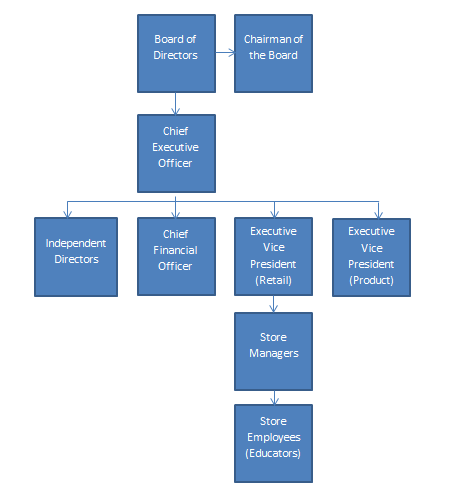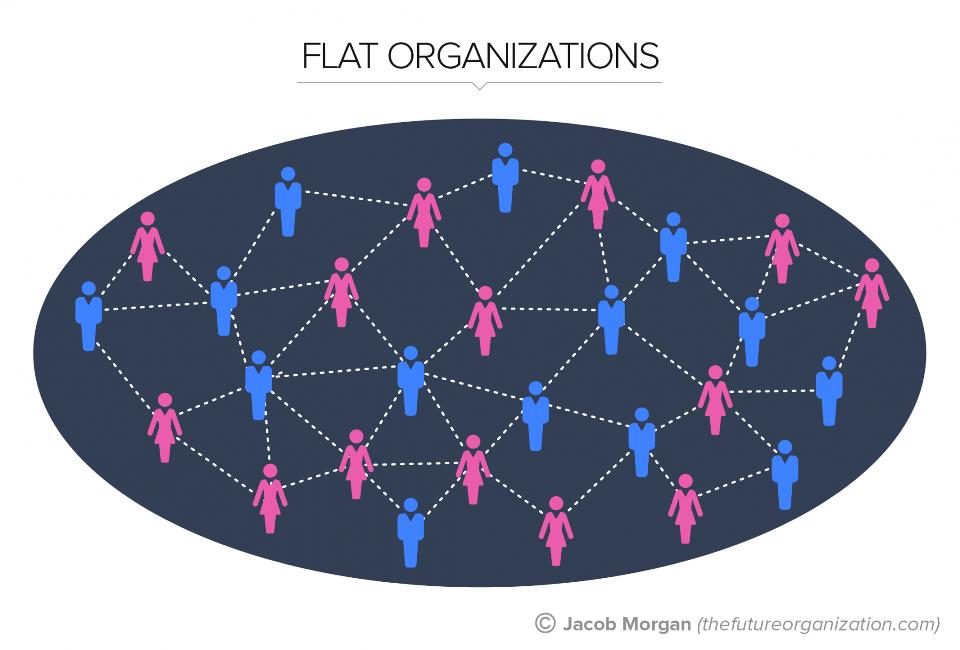There are various types of organizational structures that a business can follow. These are dependent on the size and nature of the business. Every business must choose an organizational structure suited to their business. This helps in smoothening out the flow of communication and improve the productivity of business processes.
Structure Based On Functional Processes
There are various functional roles that every organization has like- marketing finance and human resources etc.
These teams for these functions are divided and hierarchies are created within these teams. Each function acts as separate from the other, achieving its goals and targets.
This type of an organizational structure poses problems, in terms of the collaboration between different departments. A clear cut policy must be denied for communication to flow easily between each department.
Image Source: Wikipedia
A Flat Organizational Structure
This kind of an organizational structure works on the equality principle. Many organizations find it easier for individuals to be just given the responsibility and goals without any hierarchical structures.
This kind of a structure may prove to be a very productive one for the organization. But at the same time, a structure like this has its pitfalls. Most of the organizations who prefer this kind of an organizational structure are small or medium businesses.
This kind of a structure is almost impossible to follow. When it comes to large organizations. This kind of a structure, at the time, causes problems related to accountability of employees and fail to understand what they really have to achieve.
Learn more: Overcome The Language Barrier in Business- Here are some Tips
Product Based Structure
Structuring by product involves organizing business into departments, each of which focusses on a different product. Each product team has product owners who are responsible for the product.
The advantages of this type of structure depend clearly on market segments that help meet customer needs more effectively.
These teams would have its own set of functional managers who work on improving the product.
Regional Approach
Many companies divide teams on the basis of the markets they cater to. In case large corporations which cater to diverse markets, this kind of an approach seems to work well.
Teams are divided on the basis of the market and each team has an ownership of each market.
Also read: Tips To Improve Communication with Clients
Project Based Organizational Structure
In many service industries, the organizational structure works on the requirements of the project. Project teams are deployed on each project, as preferred by the clients. The team reports to the project head who is responsible for its timely execution and delivery.
Many organizations follow a structure that is a mix of one or more structures. The benefits of each structure are used to improve the flow of communication and collaboration in the business.
A business with different lines of products and small teams may use a combination of functional and product based organizational structure. Organizations also implement suitable horizontal communication policies for better functional efficiency in the business.
Use Of Collaboration Tools
The key to a successful organizational structure lies in the level of productivity the business can achieve. Online tools like Invoicera help in improving the internal collaboration in the organization.
The tool provides features like time tracking and project management for easy tracking of tasks and managing internal communication.
A well-structured organization is a key reason for the success of a business enterprise.









